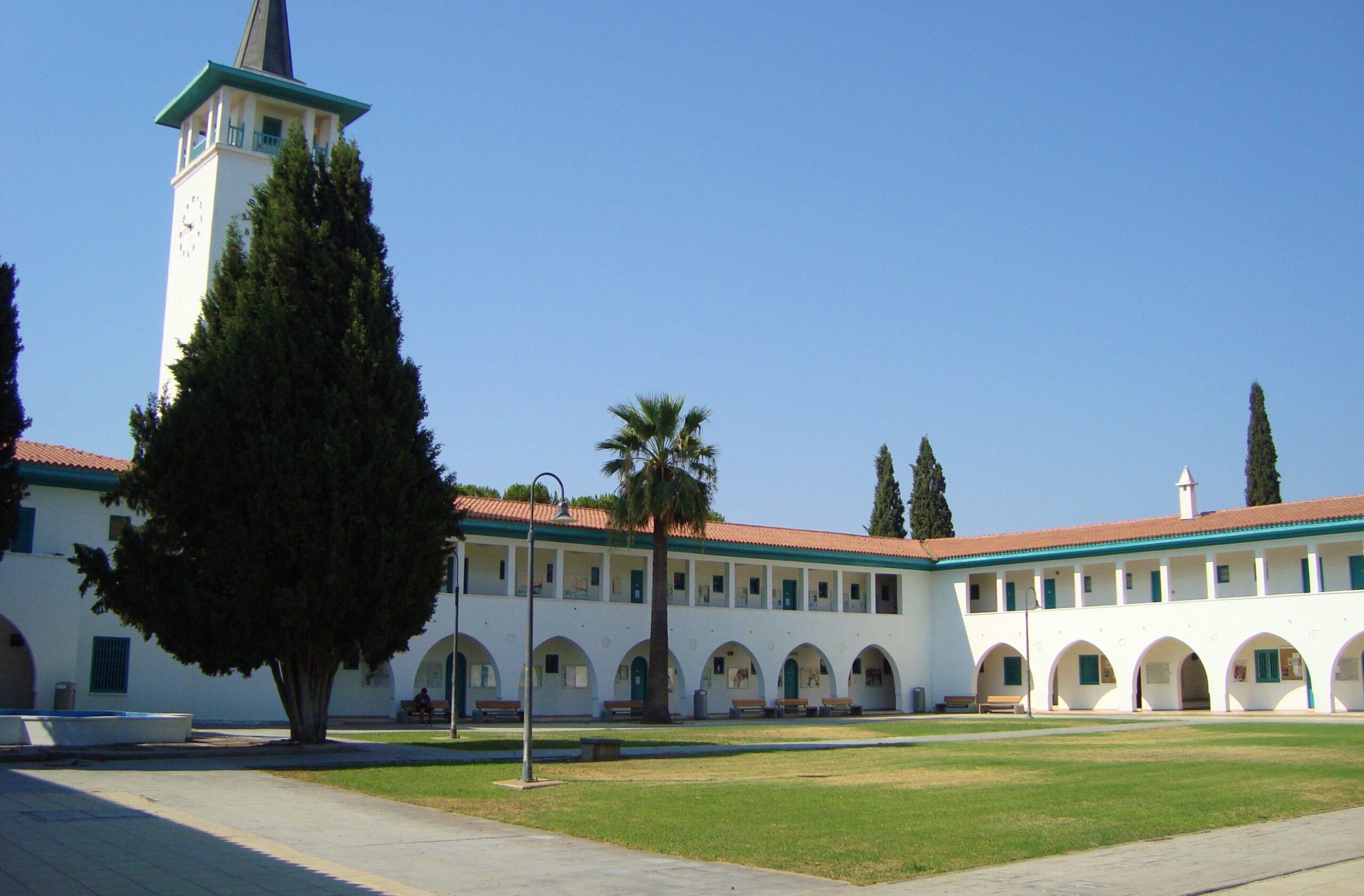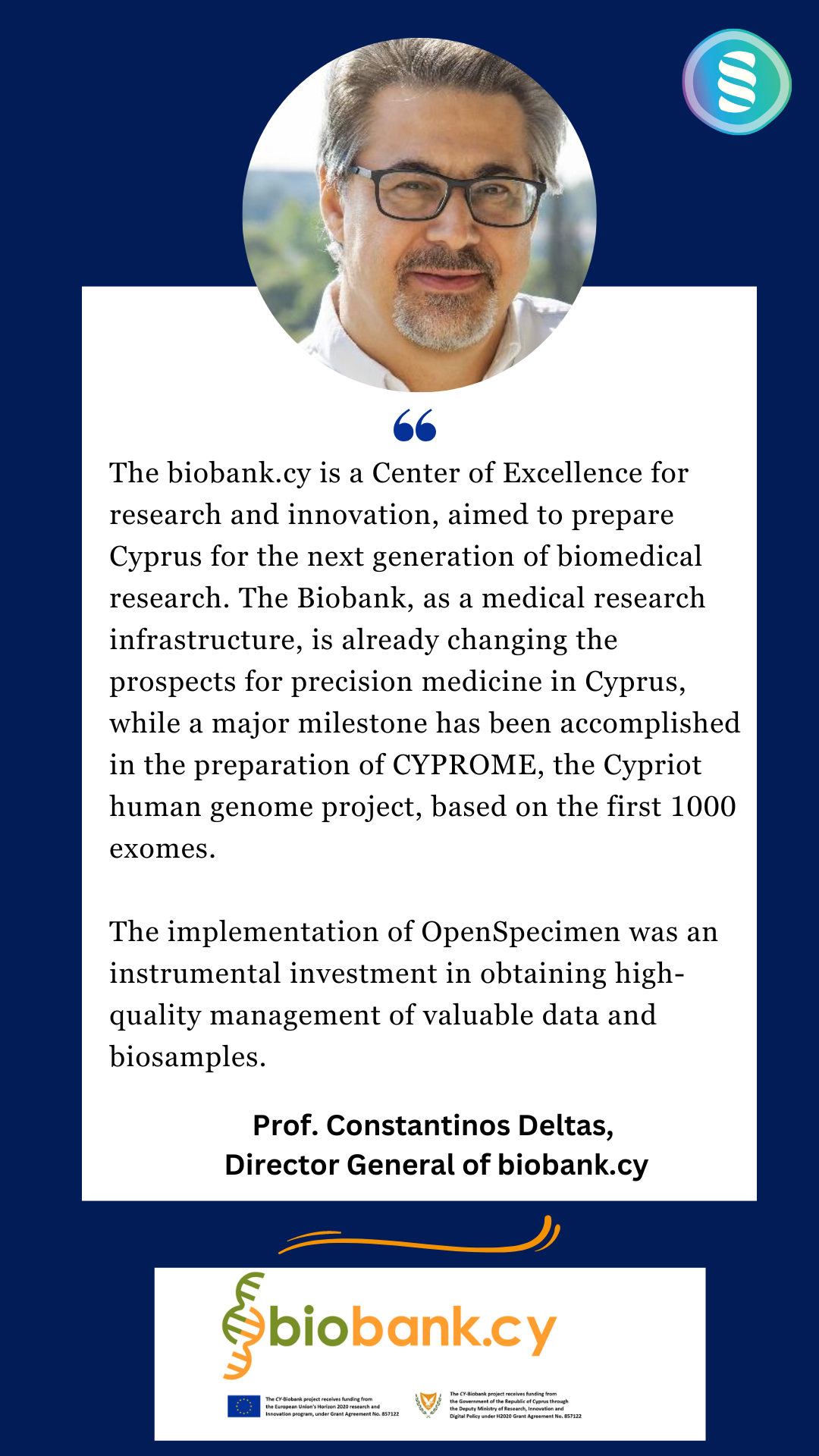We invest in Biobanking, we invest in a healthier Cyprus.

The biobank.cy’s Challenge
In keeping with its emerging international recognition as a leading research institution, UCY understood that its decade-old, disjointed biobanking database couldn’t handle the biobank’s ambitious vision. Knowing that resolving the problem would be a daunting task.
The biobank of the biobank.cy Center of Excellence at UCY, had three primary areas of concern:
Data Management – at-risk quality and integrity of specimen metadata
Labeling, Barcoding, and Printing – a labor-intensive manual effort
Reporting – inadequate querying capabilities
The Journey to a Biobanking LIMS Solution
Prof. Constantinos Deltas, Director of the biobank.cy, discussed the issue of the implementation of the BIMS with his expert colleagues, including Dr. Apostolos Malatras, IT Manager and Senior Bioinformatician, UCY, and Dr. Heimo Muller, Medical University of Graz, collaborating partner.
Armed with key requirements and an enormous amount of data, biobank.cy embarked on a global 5-month evaluation process to identify a biobanking LIMS that would meet their needs. The biobank.cy team invited proposals via a public tender process and participated in numerous product demonstrations.
After an extensive evaluation process, the biobank team decided to implement OpenSpecimen, a versatile, tested management system made to serve biobanks, that would save time and effort while offering safety and confidence in avoiding human errors.

How OpenSpecimen Met the biobank.cy Challenge
- Migration of volumes of scattered legacy data, much of it free text and manually captured data ripe with human error: The data was not only gathered and integrated from multiple input sources but it was also scrubbed to eliminate incorrect information.
- Custom system requirements to meet differing research project needs: Screens were either reconfigured or newly built to remove unnecessary fields or add custom fields, e.g., unique Participant ID across studies.
- Training for a variety of users on a completely new system and workflow: Separate online training sessions were conducted for the different user roles. An online train-the-trainer approach for data entry and reporting sessions helped ensure that expert end users were available internally to provide ongoing operational support. Additional training on all aspects of system administration was provided for the project manager. The training was presented in a test environment configured to match biobank.cy’s custom production system, including legacy data, to ease users into the new process.
OpenSpecimen not only met UCY’s biobanking LIMS requirements, but it also exceeded them.
Integrated, Quality-controlled Data Management
Automated Accurate Labeling, Barcoding, and Printing
Robust, Flexible Reporting and Auditing Capabilities
In addition to effectively meeting CY-Biobank’s key requirements, OpenSpecimen offered a number of bonus benefits, including –
Flexible Freezer Management
The biobank uses numerous freezers of different dimensions. OpenSpecimen does not impose a hierarchy or container dimensions, so biobank staff can create freezer records to match their local needs, and better manage storage by restricting freezers by specimen type or study.
Full-cycle Shipment Tracking
Rigorous Security and Backup
“OpenSpecimen is now live, serving the demands of biobank.cy. It helps to perform data management effectively and audit every action in the system. All this while simultaneously minimizing time costs and preventing human errors. OpenSpecimen contributed significantly in building a robust world-class biobank.”
~ Dr. Nantia Iakovidou, BIMS and Electronic Data Capture Operation Officer
Can OpenSpecimen Help with Your Biobanking Vision?
Whether your biobanking database exists to address the unique biomedical research challenges of your local demographic or is part of a bigger mission to contribute to the knowledge base of the world, the highly configurable OpenSpecimen biobanking management system can help.
Discover for yourself how it facilitates complete lifecycle tracking of your biospecimen inventory and adapts to virtually any research study need. And it plays well with other systems you may already have in place, such as REDCap, Epic, Cerner, or Hamilton BiOS, among others.
Request your own free personalized, no-obligation demo on the OpenSpecimen website.
Microsoft and Excel are registered trademarks of Microsoft Corporation.
